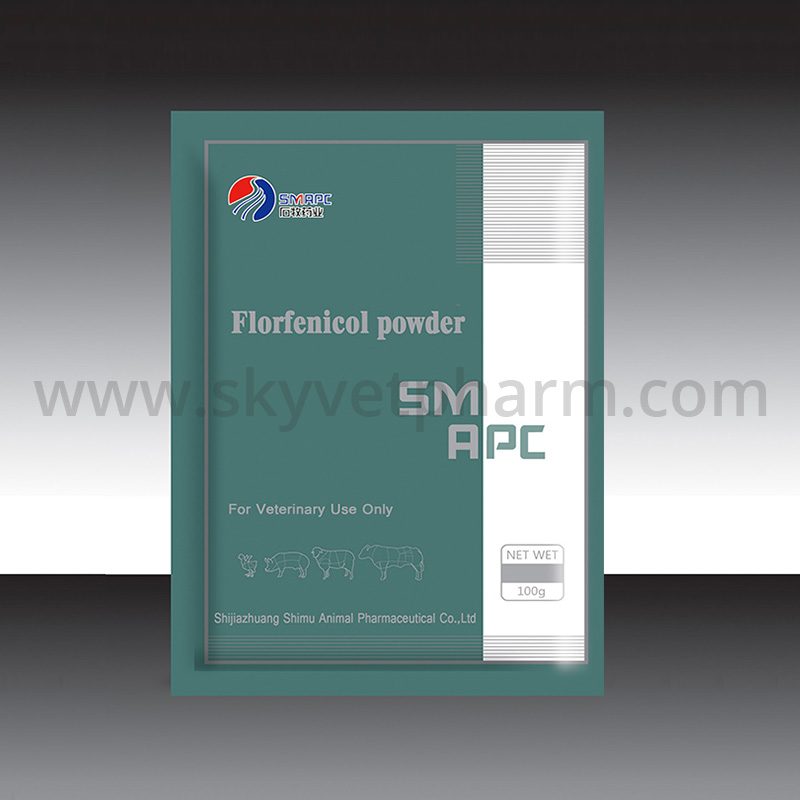Florfenicol Powder was originally used mainly in aquaculture for the treatment of pseudo-nuclear Pasteurellosis and streptococcal disease in yellowtail fish, and the natural outbreak of Atlantic salmon rickets.Florfenicol Powder For Bacterial Disease is also effective. Oral administration has a good protective effect on the infection of Pasteurella sinensis, Infectious Edwards edema infection, Vibrio anguillarum infection, and Vibrio anguillarum infection, and the curative effect is superior to other commonly used antibacterial drugs (Qiu Yinsheng et al. , 1996). The efficacy of florfenicol in the treatment of bovine respiratory diseases is significant. Hass (1996) reported that florfenicol is treated with intramuscular injection of 20mgkg-1.bw in the treatment of bovine respiratory disease, and its cure rate (80%) is significantly higher than that of amoxicillin. Group (50%). Madelent et al (1997) reported that the cure rate of florfenicol (91%) was also significantly higher than that of spiramycin (41%) in the same dose of respiratory disease. Ueda (1995) treated 50-ppm mixed feed for artificially induced porcine aureus pleuropneumonia with a cure rate of 100%; while the thiamphenicol treatment group (200 ppm) had a cure rate of less than 50%. Craene (1997) reported that bovine single-dose intravenous florfenicol (20mgkg-1) can penetrate well into cerebrospinal fluid with peak concentration (Cmax) of 4.67±1. 51ugml-1, mean residence time (MRT) 8.7h. Haemophilus can maintain an effective blood concentration of 20h, which can be used as the drug of choice for the treatment of meningitis. The pharmacokinetic study of florfenicol in lactating cows (Soback, et al, 1995) showed that breast perfusion administration was superior to intramuscular injection, and plasma concentrations were significantly higher than plasma concentrations 4 hours after intravenous infusion, bioavailability ( 54%) is higher than the bioavailability of intramuscular injection (38%), which has important practical significance for breast perfusion administration to treat the mammary gland of cattle. After oral administration of florfenicol (30mg/kg.bw) in broiler chickens, the bioavailability was 55.3% and the plasma protein binding rate was 18.5%. After broiler chicken injection of florfenicol (30mg/kg.bw), the bioavailability was 96.6% (Afifi, 1997); After the infection of ducks infected with florfenicol (30mg/kg.bw), the bioavailability was 73.%, which was higher than that of healthy ducks.
